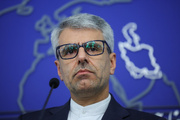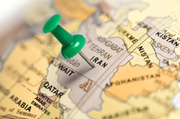Libya’s then charge d’affaires in Beirut delivered his country’s formal invitation to the 50-year-old Shia cleric.
With the idea that attending the ceremony would help unite the Islamic world, Imam Musa Sadr began making arrangements for his trip to Tripoli.
Meanwhile, on the other side of the Mediterranean in Tripoli, Qadhafi and a small group of officials from his dreaded security organizations were studying the latest developments in the region and the Iranian nation’s resistance against the monarchist regime.
Qadhafi concluded that the victory of the Islamic Revolution in Iran would influence the entire region, including the Fertile Crescent.
The Iranian youths’ movement to overthrow the shah’s regime had reached its peak and had the potential to spread to Iraq, Palestine, Jordan, Syria, Lebanon, Pakistan, and Afghanistan and even to the Muslim republics of the former Soviet Union.
Libya’s young leader, who overthrew the Sanusi monarchy in a military coup in 1969 with the support of foreign powers, felt obligated to protect the interests of the Eastern superpower of the time, the Soviet Union.
Thus, Qadhafi came to the conclusion that Sadr’s family in Iraq and Lebanon could help promulgate the ideas of the movement of the Islamic revolutionary forces in Iran, which would threaten the interests of Eastern and Western powers.
Both Saddam Hussein, who was Iraq’s second most important political figure at the time, and Qadhafi pursued similar goals, such as protecting foreign interests and suppressing Shia movements.
They concluded that following the victory of the Islamic Revolution in Iran, Ayatollah Mohammad Baqer Sadr in Iraq and Imam Musa Sadr in Lebanon would form links to Iran’s revolution and this would threaten the region’s Sunni Arab governments.
Qadhafi took prompt action to destroy this link and in an immoral and depraved act issued the order for the kidnapping and disappearance of Imam Musa Sadr.
Musa Sadr entered Libya on August 25, 1978 and, after attending the country’s independence day ceremonies, was kidnapped along with two of his followers, Sheikh Mohammed Yaaqoub and Abbas Badreddine, by Libyan security officers.
He was reportedly transferred to the Bab al-Aziziyah garrison in the Fazan Desert near the Algerian border and then taken to the Abu Salim Prison near Tripoli.
Even now, 26 years after the disappearance of Sadr, the Libyan government still refuses to give a straight answer about the fate of the Shia ayatollah.
However, it is certain that Qadhafi himself is responsible for the kidnapping of Sadr, since the ayatollah had traveled to Libya on the direct invitation of the Libyan leader and the Libyan government was responsible for safeguarding the life of its guest according to international law.
Now that Qadhafi has obliquely acknowledged many of his numerous crimes, including the Lockerbie bombing, he should be held accountable to the Muslim community, reveal the exact details about the Sadr kidnapping, and release the great Shia leader.
HL/HG
End
MNA

























Your Comment